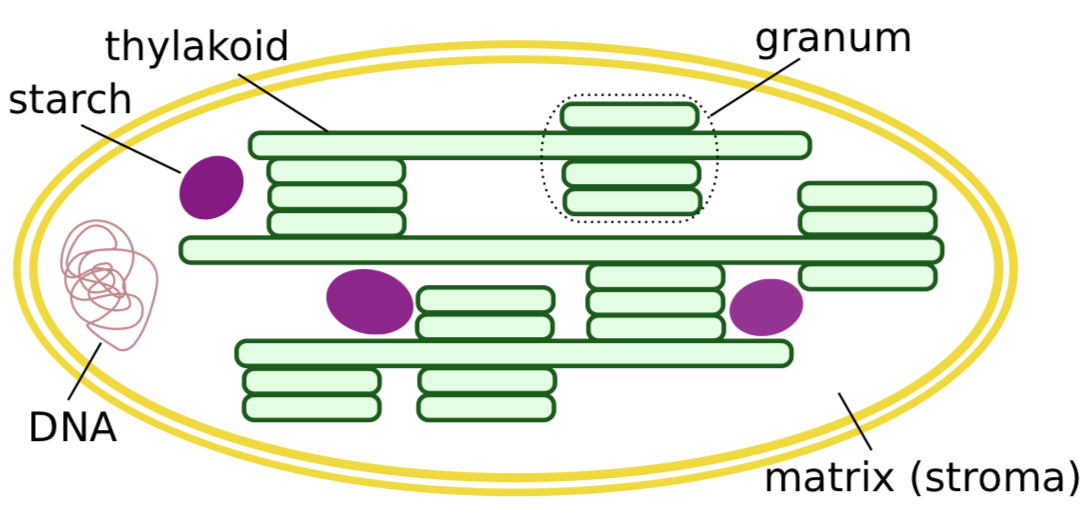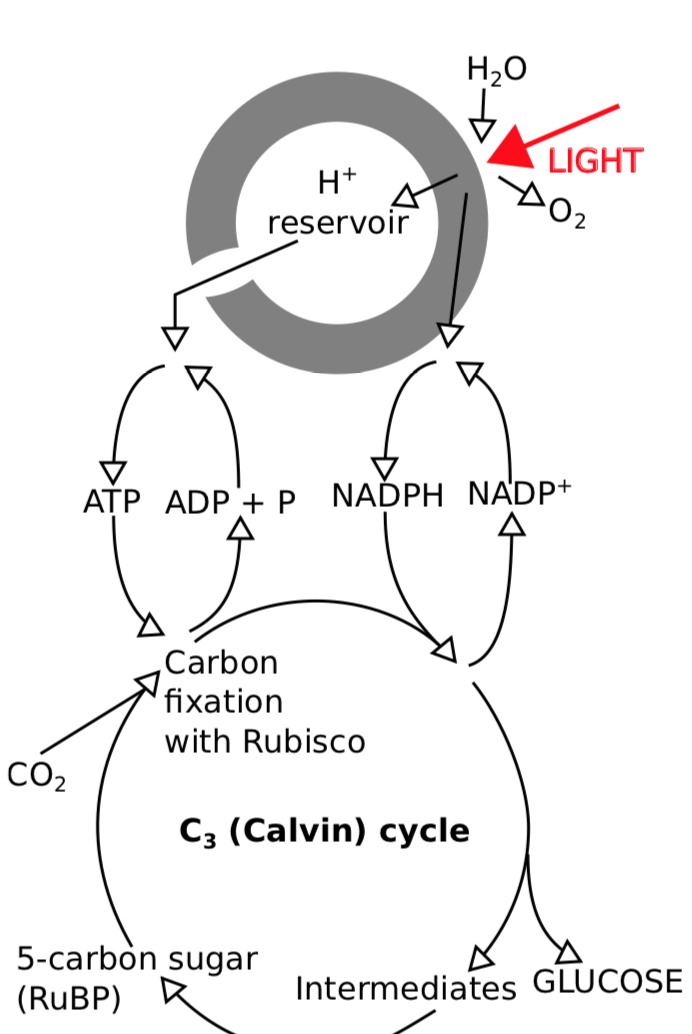3.3: Etapa enzimática
( \newcommand{\kernel}{\mathrm{null}\,}\)
La etapa enzimática tiene muchos participantes. Estos incluyen dióxido de carbono, portador de hidrógeno con hidrógeno (NADPH), ATP, bifosfato de ribulosa (RuBP, oC5), y Rubisco junto con algunas otras enzimas. Todo ocurre en la matriz (estroma) del cloroplasto.

El evento principal de la etapa enzimática esCO2 la asimilación conC6 moléculas deC5 corta vida. La asimilación requiere Rubisco como enzima. A continuación, este temporalC6 se rompe en dosC3 moléculas (PGA). Entonces, PGA participará en el complejo conjunto de reacciones que gastan NADPH y ATP como fuentes de hidrógeno y energía, respectivamente; y produce (a través de la etapa intermedia de PGAL) una molécula de glucosa (C6H12O6) por cada seis moléculas asimiladas deCO2. NADP+, ADP y Pi volverán a la etapa de luz. Este conjunto de reacciones químicas devuelve RuBP que iniciará el nuevo ciclo de asimilación. En consecuencia, todas las reacciones descritas en este párrafo forman parte del ciclo que tiene el nombre de “ciclo Calvino” o “C3ciclo” (porque las moléculas C3 PGA aquí son las más importantes).

En total, la etapa enzimática comienza conCO2, NADPH, ATP yC5 (RuBP). Termina con glucosa (C6H12 O6), NADP+, ADP, Pi y la mismaC5. Con una adición de nitrógeno y fósforo, la glucosa dará todas las demás moléculas orgánicas (Figura3.3.3).

Para resumir, la lógica de la fotosíntesis (Figura3.3.4) se basa en una idea simple: hacer azúcar a partir del dióxido de carbono. Imagínese si tenemos las letras “s”, “g”, “u” y “a” y necesitamos construir la palabra “azúcar”. Obviamente, necesitaremos dos cosas: la letra “r” y la energía para poner estas letras en el orden correcto. La misma historia ocurre en la fotosíntesis: necesitará hidrógeno (H) que es la “letra ausente” deCO2 porque los azúcares deben contener H, O y C.+ NADP/NADPH se usa como proveedor de hidrógeno, y la energía es ATP que se crea a través de la bomba de protones, y la bomba de protones arranca porque la luz ayuda a concentrar protones en el embalse.



